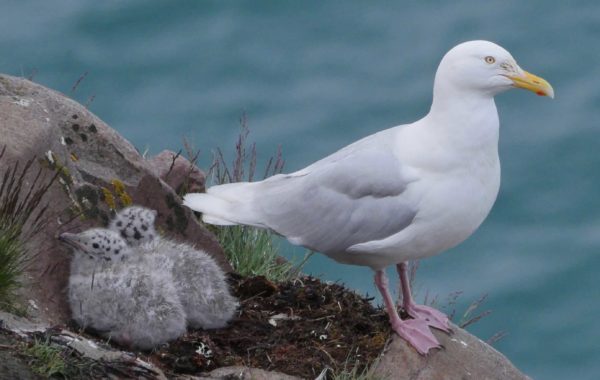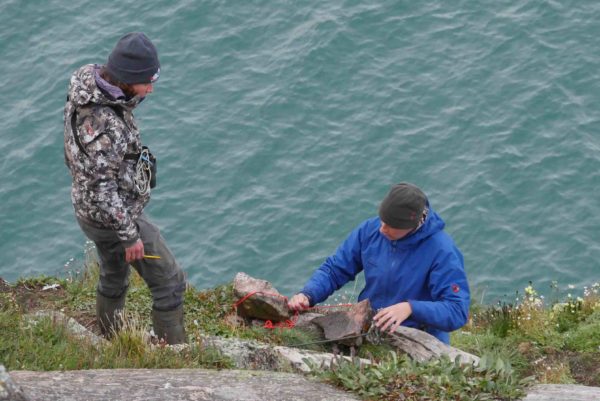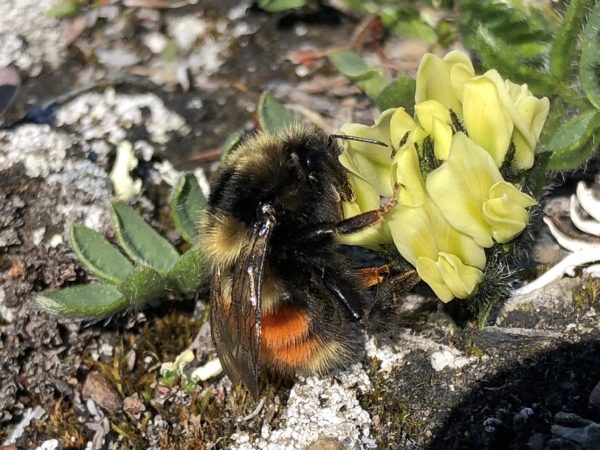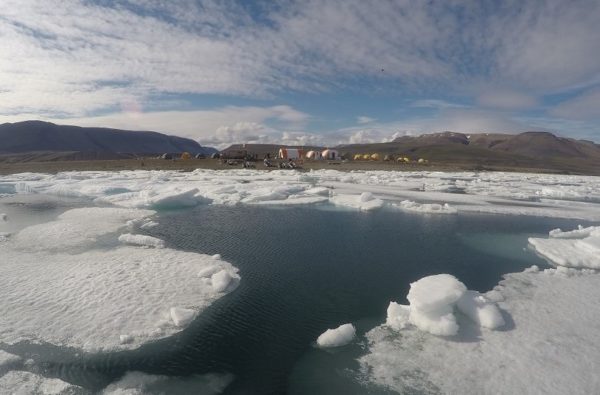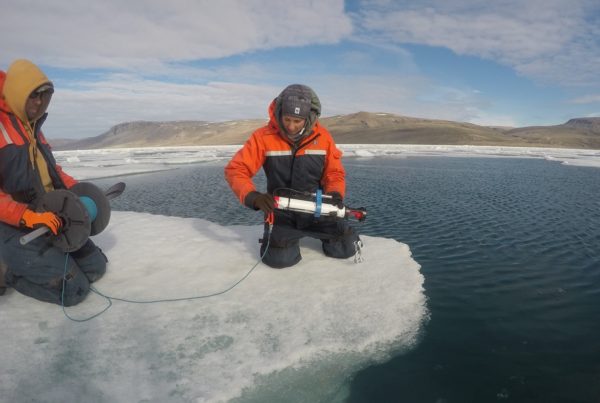Narwhal Camp: Polar bears, bowhead whales and giant gulls
WWF biologists Tom Arnbom and Melanie Lancaster share their observations from Narwhal Camp in Tallurutiup Imanga in Canada’s Arctic, where they and other scientists are working to uncover the secrets of the narwhal, unicorn of the sea. (You can read about their first week in camp here.) This week: buzzing bees, giant gulls, one of the world’s biggest whales and a protective mama bear in the land of the midnight sun
July 30: The largest gulls in the world
The most common bird that patrols Tremblay Sound for something to feast on is the glaucos gull. It is one of the largest gulls in the world and breeds in the Arctic. Today we paid a visit to the colony at the end of the bay to start the bird study, which is part of the DFO-led research program EAT (Ecosystem Approach Tremblay).
The colony is very busy as parents tend to their young – the most gorgeous spotted chicks. Andréanne Beardsell and Francis Beaudet from the University of Quebec at Rimouski are conducting research to study glacous gull behaviour and feeding preferences.
July 31: Bees, start your engines
We’re iced in! This morning we woke to Tremblay Sound covered in ice as far as the eye could see. Because the weather is not co-operating, some of the bug lovers in camp have temporarily turned their focus from narwhals to one of the lesser known, but no less hardy, members of the Arctic tundra.
Bumble bees in the Arctic help the tundra to bloom every spring and summer. Too cold for bees, you ask? As soon as the sun comes out, the bees warm up by “buzzing” for some time – not unlike a miniature helicopter starting its engine. On sunny days like today, hundreds of polar bumble bees can be seen searching for nectar and pollinating Arctic wildflowers.
The biggest threat to the polar bumble bee is its larger cousin, Bombus hyperboreus. This larger bee kills the polar bee queen and takes over the colony, turning the workers into her slaves. Even the toughest little critters have many surprising challenges in the Arctic.
Aug. 1: Land of the midnight sun
In summer, the sun never sets in the Arctic. The midnight sun makes the ocean very productive and teeming with life. Today we were lucky enough to see both narwhals and bowhead whales just off the camp among the ice floes.
The sea ice that moved in yesterday has stayed with us and is even more packed, ranging from bright white to light blue. We’re told that this blue ice is older and hasn’t melted for many years. We used the sea ice as a platform to get out over the deeper waters of Tremblay and deploy equipment that measures life in the ocean. We are continuing this every hour throughout the day and night to get an idea of the ocean’s daily rhythm.
As we get busier with the scientific program, co-operation and high spirits among team members make for inspired work with plenty of laughs.
Aug. 2: Thar she blows!
Suddenly out of the blue, we hear a blow from a whale. Among the ice floes, a dark-coloured body rises above the water’s surface. It is the second largest whale on Earth…a bowhead. These giants can be 200 years old and weigh almost 100,000 kg – that’s heavier than 50 pickup trucks.
Bowheads are one of three “ice whales” that live in the Arctic – the other two are narwhals and beluga whales. They have all adapted to the Arctic Ocean’s harsh environment. Bowheads can break through ice up to one metre thick with their immense heads to get a breath or two. Despite their size, they feed on small shrimp by skimming the icy water.
Scientists estimate that the summer sea ice will almost be gone by 2030. This will create opportunities for new shipping lanes through the Arctic. It’s therefore urgent to understand more about whales’ natural migrations to avoid disturbance, including of these slow-moving giants.
Aug. 3: Polar bear country
Victoria Moran from Parks Canada is on polar bear watch. Suddenly, there they are: a few hundred metres from the camp, a mother polar bear and her two-year old cub, two white animals that were not present a few minutes ago, and inland rather than along the icy shore, as we expected. The sea ice is breaking up and some polar bears move to shore in summer, looking for something to eat. It’s hard to catch seals without sea ice. The mother bear smells our camp and immediately urges her cub into a run to move away from us as quickly as possible.
Tremblay Sound is part of Tallurutiup Imanga, or Lancaster Sound, Canada’s largest and newly declared National Marine Conservation Area. It’s teeming with Arctic wildlife, home to around 2,500 polar bears, most of the world’s narwhals during summer, bowhead and beluga whales, and walrus and Greenland sharks, to name just a few. Today’s polar bear sighting has made it real to many of us that we are in polar bear country. The importance of the polar bear watch has really hit home, even when it means crawling out of our warm sleeping bags in the middle of the night!
For more updates from Narwhal Camp, check back later this week.

